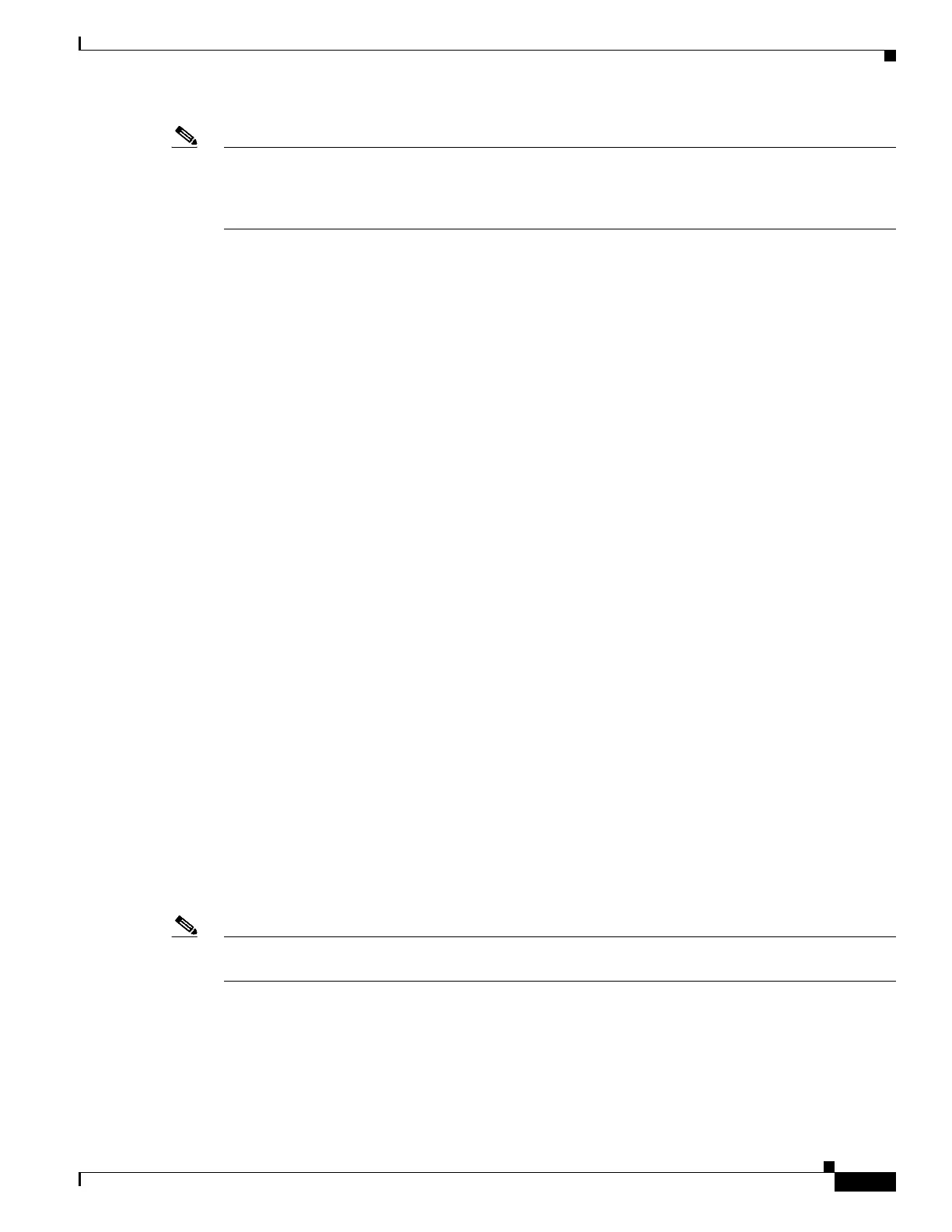40-7
Catalyst 4500 Series Switch, Cisco IOS Software Configuration Guide - Cisco IOS XE 3.9.xE and IOS 15.2(5)Ex
Chapter 40 Configuring Bidirection Forwarding Detection
Information About Bidirectional Forwarding Detection
Note If a BFD configuration is removed from the remote peer while the BFD session is in the up state, the
updated state of the BFD session is not signaled to the static route. This will cause the static route to
remain in the RIB. The only workaround is to remove the static route BFD neighbor configuration so
that the static route no longer tracks BFD session state.
Benefits of Using BFD for Failure Detection
When you deploy any feature, it is important to consider all the alternatives and be aware of any
trade-offs.
The closest alternative to BFD in conventional EIGRP, BGP, and OSPF deployments is the use of
modified failure detection mechanisms for EIGRP, BGP, and OSPF routing protocols.
If you set EIGRP hello and hold timers to their absolute minimums, the failure detection rate for EIGRP
falls to within a one- to two-second range.
If you use fast hellos for either BGP or OSPF, this Interior Gateway Protocol (IGP) protocol reduces its
failure detection mechanism to a minimum of one second.
Advantages to implementing BFD over reduced timer mechanisms for routing protocols include the
following:
• Although reducing the EIGRP, BGP, and OSPF timers can result in minimum detection timer of one
to two seconds, BFD can provide failure detection in less than one second.
• Because BFD is not tied to any particular routing protocol, it can be used as a generic and consistent
failure detection mechanism for EIGRP, BGP, and OSPF.
• Because some parts of BFD can be distributed to the data plane, it can be less CPU-intensive than
the reduced EIGRP, BGP, and OSPF timers, which exist wholly at the control plane.
Hardware Support for BFD
The Catalyst 4500 supports a limited number of BFD sessions in hardware. Placing a session in BFD
hardware is termed hardware offload. The advantage of hardware offload is that session keep-alive is
handled entirely in hardware, placing no load on the CPU.
Not all BFD sessions can be offloaded to hardware. The requirements for offloaded sessions are:
• BFD version 1
• IPv4
• No echo mode
Note BFD Echo is only supported in software and not hardware, because of a limitation on the Catalyst 4500
Series Switches.
The number of offloaded sessions varies by supervisor engine:
WS-X45-SUP6-E , WS-X45-SUP6L-E, WS-X4948-E, and C4900M, support 64 sessions in hardware.
Further sessions must be supported in software.
WS-X45-SUP7-E, WS-X45-SUP7L-E, and WS-X45-SUP8-E support all 100 sessions in hardware.

